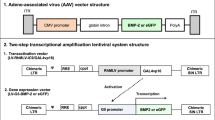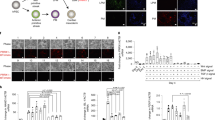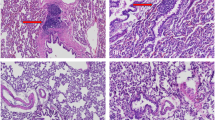Abstract
A commonly encountered problem in orthopedics is bone and cartilage tissue injury which heals incompletely or without full structural integrity. This necessitates development of improved methods for treatment of injuries which are not amenable to treatment using current therapies. An already large and growing number of growth factors which play significant roles in bone remodeling and repair have been identified in the past few years. It is well established that bone morphogenic proteins induce the production of new bone and cartilage. An efficient method of delivery of these growth factors by conventional pharmacological means has yet to be elucidated. We wished to evaluate the use of retroviral vector-mediated gene transfer to deliver genes of therapeutic relevance for bone and cartilage repair. To determine the feasibility of using amphotropically packaged retroviral vectors to transduce primary rabbit mesenchymal stem cells of periosteal origin, primary periosteal cells were isolated from New Zealand white rabbits, transduced in vitro with a retroviral vector bearing both the nuclear localized lacZ marker gene and the neor gene, and selected in G418. We used a convenient model for analysis of in vivo stability of these cells which were seeded on to polymer scaffold grafts and implanted into rabbit femoral osteochondral defects. The nuclear localized β-galactosidase protein was expressed in essentially 100% of selected cells in vitro and was observed in the experimental explants from animals after both 4 and 8 weeks in vivo, while cells transduced with a retroviral vector bearing only the neor gene in negative control explants showed no blue staining. We extended our study by delivering a gene of therapeutic relevance, human bone morphogenic protein 7 (hBMP-7), to primary periosteal cells via retroviral vector. The hBMP-7 gene was cloned from human kidney 293 cell total RNA by RT-PCR into a retroviral vector under control of the CMV enhancer/promoter. Hydroxyapatite secretion, presumably caused by overexpression of hBMP-7, was observed on the surface of the transduced and selected periosteal cells, however, this level of expression was toxic to both PA317 producer and primary periosteal cells. Subsequently, the strong CMV enhancer/promoter driving the hBMP-7 gene was replaced in the retroviral vector by a weaker enhancer/promoter from the rat β-actin gene. Nontoxic levels of expression of hBMP-7 were confirmed at both the RNA and protein levels in PA317 producer and primary periosteal cell lines and cell supernatants. This work demonstrates the feasibility of using a gene therapy approach in attempts to promote bone and cartilage tissue repair using gene-modified periosteal cells on grafts.
This is a preview of subscription content, access via your institution
Access options
Subscribe to this journal
Receive 12 print issues and online access
$259.00 per year
only $21.58 per issue
Buy this article
- Purchase on Springer Link
- Instant access to full article PDF
Prices may be subject to local taxes which are calculated during checkout
Similar content being viewed by others
Author information
Authors and Affiliations
Rights and permissions
About this article
Cite this article
Mason, J., Grande, D., Barcia, M. et al. Expression of human bone morphogenic protein 7 in primary rabbit periosteal cells: potential utility in gene therapy for osteochondral repair. Gene Ther 5, 1098–1104 (1998). https://doi.org/10.1038/sj.gt.3300703
Received:
Accepted:
Published:
Issue Date:
DOI: https://doi.org/10.1038/sj.gt.3300703
Keywords
This article is cited by
-
Cartilage repair using stem cells & biomaterials: advancement from bench to bedside
Molecular Biology Reports (2020)
-
Application of combined porous tantalum scaffolds loaded with bone morphogenetic protein 7 to repair of osteochondral defect in rabbits*
International Orthopaedics (2018)
-
Use of Tissue Engineering Strategies to Repair Joint Tissues in Osteoarthritis: Viral Gene Transfer Approaches
Current Rheumatology Reports (2014)
-
Ultrasound-Microbubble Transplantation of Bone Marrow Stromal Cells Improves Neurological Function after Forebrain Ischemia in Adult Mice
Cell Biochemistry and Biophysics (2014)
-
Enhanced Adenovirus Transduction of hMSCs Using 3D Hydrogel Cell Carriers
Molecular Biotechnology (2013)



